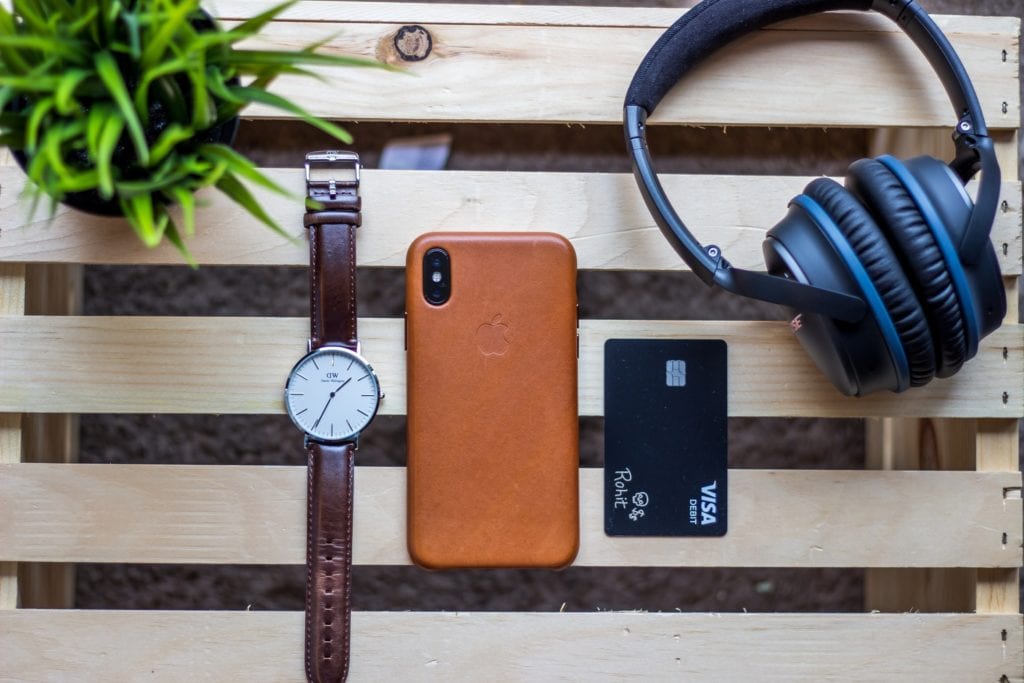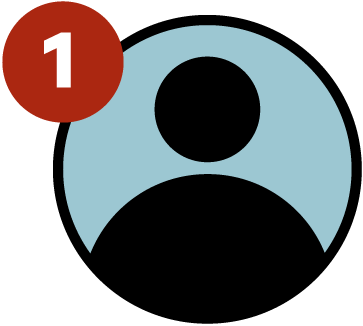If you have bad credit, you’re not the only one. According to Snap Finance financial company, over half of Americans have bad credit. The good news is, poor credit isn’t permanent; your credit score is fixable. And we know how to help.

A bad credit score can occur for a number of reasons: delays in paying back student debt or loans, medical bills, a new mortgage, credit card debt or simply having no credit history yet. But even those with poor credit have options. Some credit cards are available to assist you in building credit, helping to secure your financial future with your partner (hopefully, you found someone with excellent credit… if you’re not sure, it’s definitely time to have the money conversation).
What Is Bad Credit?
Your FICO score is a common scale used to determine your credit. The scale runs from 300 to 850, and a fair or poor credit score is typically one below 670.
A more detailed description can be seen in the chart below:
FICO Credit Score. Rating
300 – 579 Poor
580 – 669 Fair
670 – 739 Good
740 – 799 Very Good
800 – 850 Excellent
VantageScore is another credit score system but the ratings are slightly different; generally anything below 660 is considered fair or poor. Equifax Credit Score is also a popular system with ranges from 280-850. Experian and TransUnion are other credit reporting agencies. You can check your credit for free at most of these agencies, and no particular one is better than the other. [Shouldn’t we MENTION EXPERIAN HERE and explain that there are several credit report agencies and no one is best? Also: CAN WE ADD somewhere that anyone can get a free credit report (and maybe free credit score?)… for those people who want to see if they even have bad or good credit?]
How to Improve Credit (Before Getting Credit Cards)
Heading to the pub to drown your credit sorrows in a pint or two won’t help. Instead, consider a few alternatives to build your credit before you begin applying for cards.
Currently, credit scores are calculated by the following activity: the length of your credit history, your debt-payment history, how much debt you currently owe, new credit (credit newly extended to you in the form of a loan, mortgage or new credit card) [HUH? like loans or credit cards] and types of credit (like a mortgage vs. a car loan). [like mortgage vs car loan?].
There are now a few [FREE AND EASY?] (I’m not sure how easy they are to actually use, so I’d rather not tote them as such) programs that can help people build credit scores before applying for a credit card.
- UltraFICO: Users with fair/poor credit are able to include their banking activity (checking, savings and money market) in their FICO score calculations. This is best for people who have a solid history maintaining their bank account — with at least $400 in the account and no overdrafts (negative account balances) for the past three months. Contact the UltraFICO team for more information and how to apply. [EXPLAIN: The site explains the process in detail. You have to fill out a form online and send it to the company as an email. THEN you wait and will hear back… is that it? they have changed this and rolled it back since I wrote the post over a year ago, so it’s best to contact them for eligibility]
- Experian Boost: This site allows users to improve their credit score by connecting their phone and utility payments to their score. It seems to be best for those who have recurring, automatic payments taken out for utility bills. To get started, visit the site and fill in the online form.
Don’t forget about the old-fashioned ways of improving your credit:
- Piggyback: Become an authorized user on someone else’s card (this is where choosing a fiancée with good credit would come in handy) and see your credit score rise. Just make sure, as always, to pay your bill on time. Messing this one up will not only destroy your credit even more, but could also do the same for the main cardholder. Take this route only if you’re sure you’ll be able to do so responsibly.
- Pay off your balances: If the reason you have poor credit in the first place is because you haven’t paid off your existing card balances, then make doing so a top priority.
- Credit can’t be fixed overnight. If you’re making the effort, you should begin to see your credit slowly improve within 3-6 months, but it may take up to a year.
[Can we add one sentence here about how long it may take to go from “bad credit” person to “good credit” person? Like if you follow all of these steps, your bad credit score should start to fade away within six months—and you can check every month if you like. WILL IT take a year or more to lose the bad credit history? Any sense of timeline will help readers. Especially if all they REALLY want is to get the Chase Sapphire Preferred, etc.] (addressed above)
Three Types of Credit Cards
As you work on (re)building your credit, you probably won’t be approved for some of the cards offering the best travel or cash-back rewards. But remember, poor credit is only a temporary situation (if you follow the tips in this post). Once you begin the credit-repair process, you can apply for more premium cards in the future.
Before digging in, it’s important to know the difference between a secured card, unsecured card and a prepaid card. [IS THE 4th KIND OF CARD THE USUAL CREDIT CARD? We need to mention how that fits into this context.] No, it’s an unsecured card (it says this under the type). This is more like a regular credit card, but it’s still different. I think it makes sense when you read the definitions. I mention three secured, one unsecured, and no prepaid bc as per the definition below, I don’t recommend them.
- Secured cards: These cards require a security deposit (usually around the same as your line of credit). The deposit is refundable (you may even get some interest on it, which is a silver lining) if you pay off your bills and keep your account in good standing, but it is held as collateral if you can’t make your payments. The advantage of a secured card is that those with poor credit can get them, and the data is reported to the major credit bureaus, so this is a way to improve and build your credit score when handled right.
- Unsecured cards: These cards won’t require a deposit, but require paying higher annual fees (and some hidden fees, like monthly or additional charges). APR and interest rates are often exorbitant (like 34%). Proceed with caution here; it’s imperative you pay off your bill in full with these cards (with any card, really) or you’ll be stuck with a lot of extra debt, which will make your credit worse, not better.
- Prepaid cards: Don’t bother with prepaid cards, which are basically glorified debit cards. You have to preload funds for these, and the data won’t be reported to the credit bureau, which can be good in a sense, but a bad idea if you’re looking to build credit.
Recommended Credit Cards
Card: Capital One Secured Mastercard
Why this card: low, refundable deposit
Type: Secured, with a $49, $99 or $200 deposit required
Recommend credit rating: Poor/Fair [WHAT DOES THIS MEAN? The company recommends this for people with fair/poor credit?] Yes. This ties in with the example credit scores at the top of the article.
Annual Fee: $0
APR: 26.99%
Pros: You can deposit more than your minimum required security deposit before your account opens to receive a higher initial credit line (up to $1,000). If you complete your first five payments on time, you may be eligible for a higher line with no additional deposit. And, you may get a credit limit of $200 with just a $49 deposit.
Cons: Must have a bank account (any US bank works) [WITH CAPITAL ONE? — NO ANY BANK ACCOUNT], high APR
Card: Open Sky Visa
Why this card: no credit check
Type: Secured – refundable deposit amounts start at $200, deposit matches credit limit (up to $3,000 upon approval)[SO if you want a $2K loan you have to deposit that much first?] yes
Recommend credit rating: doesn’t matter – because there’s no check! But you must meet income requirements.
Annual fee: $35 per year
APR: 18.89%
Pros: Those with terrible or no credit will be approved for this card— everyone will. Getting this card is a way to build credit. You can also pay the balance via check, money order or transfer if you don’t have a bank account.
Cons: No possibility of upgrading to an unsecured card. Your deposit matches your credit limit and there’s an annual fee.
Card: Discover It Secured
Why this card: offers rewards
Type: Secured – your refundable deposit matches your credit limit
Recommend credit rating: Poor/Fair
Annual Fee: $0
APR: 22.99%
Pros: You get rewards. Earn 2% cashback on up to $1,000 of spend per quarter (on restaurants and gas) and 1% on all other spending. And, Discover will match all of the cashback you earn your first year. If your account is properly handled for eight months, you may be able to upgrade to an unsecured card or get your deposit back.
Cons: Must have a bank account (any US bank works) [with DISCOVER? NO ANY BANK ACCOUNT ]. Your deposit matches your credit limit. Not all places accept Discover.
Card: Milestone Gold Mastercard
Why this card: no deposit required
Type: Unsecured
Recommend credit rating: Poor/Fair
Annual Fee: depends on credit worthiness – between $35 and $99. There may be a $25 account opening fee for some users.
APR: 24.90%
Pros: no deposit required
Cons: the worse your credit is, the higher your annual fee will be, plus the additional account opening fee.
Biggest Mistake You Can Make
Whatever you do, don’t forget to pay off your credit card bill in full each month. While this is important for any card user, it’s especially important for those looking to build credit, because accruing debt will result in lowering your credit score, not improving it. Only get these cards if you’re sure you can pay them off completely each month.
















